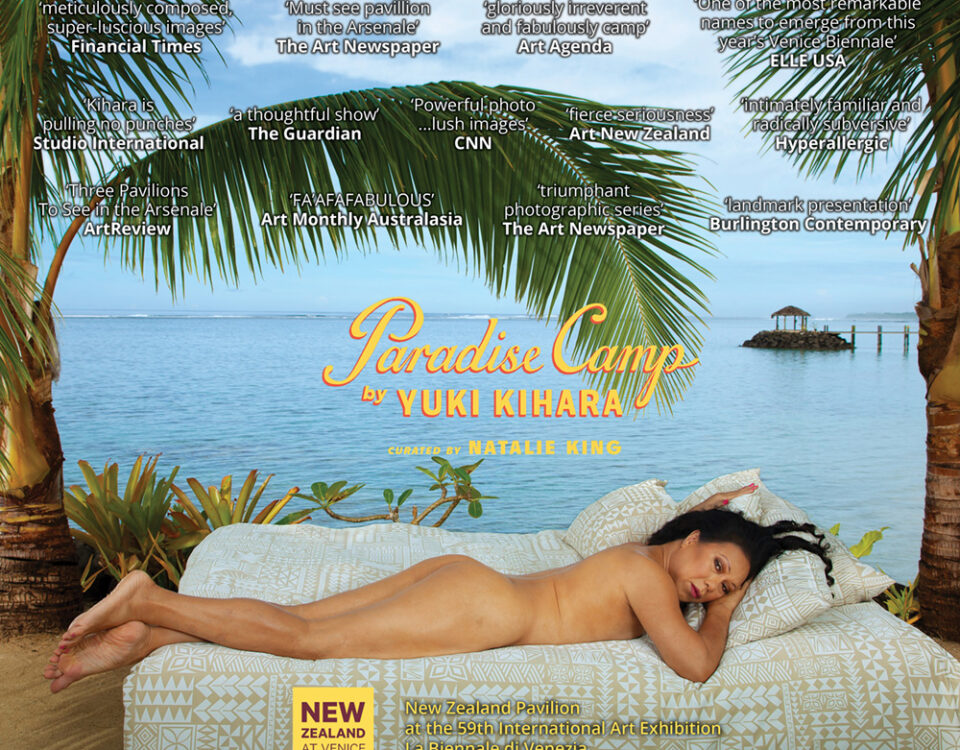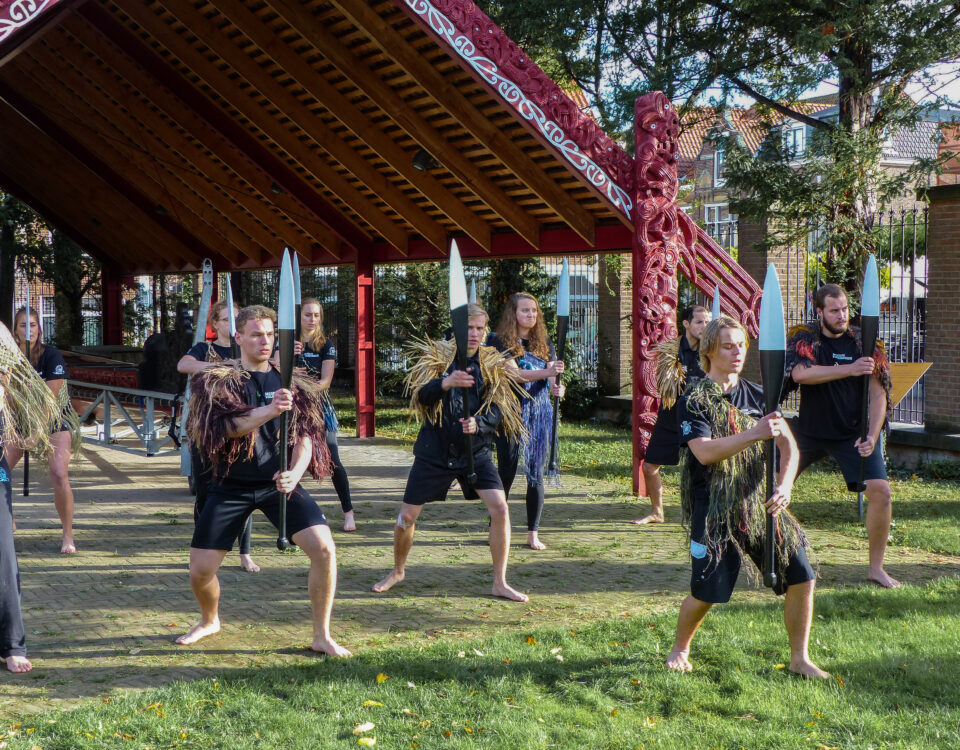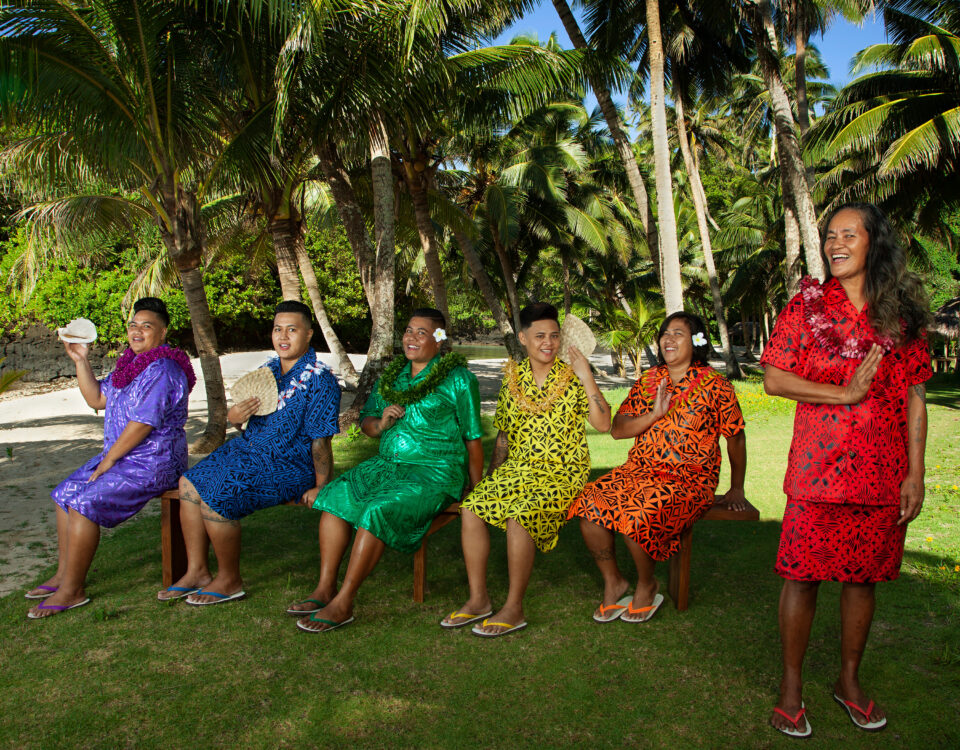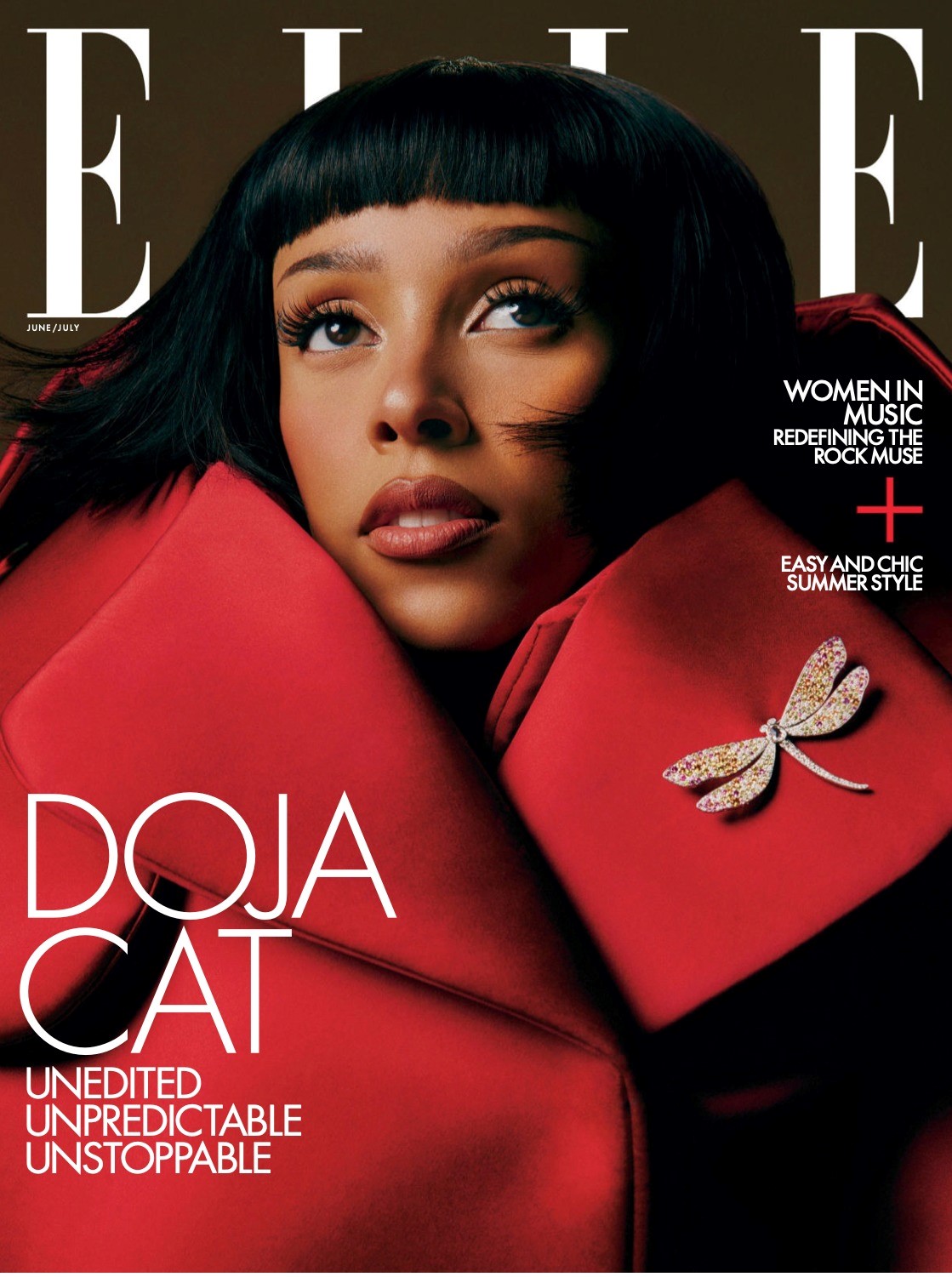
Elle USA: Yuki Kihara
June 30, 2022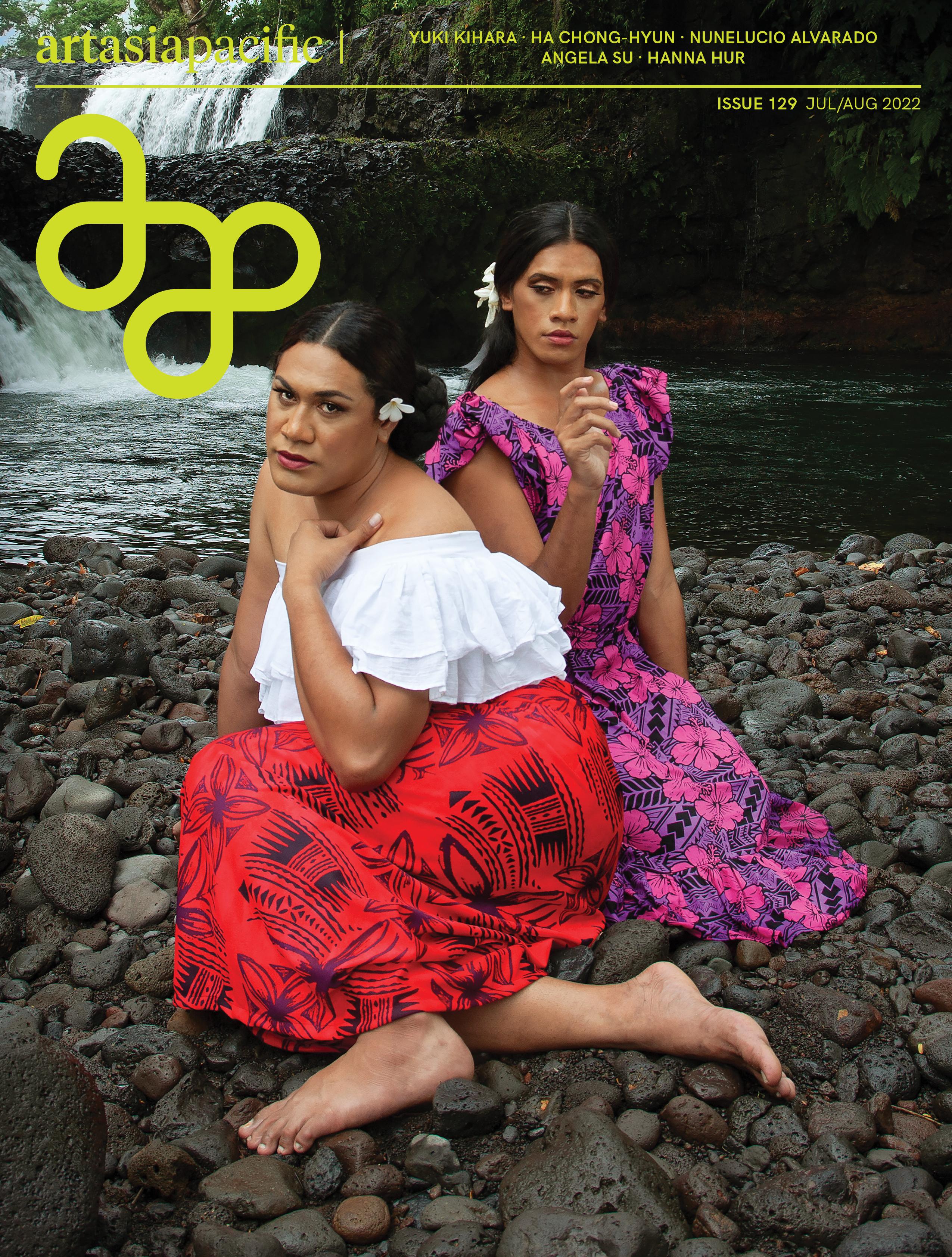
Art Asia Pacific: Yuki Kihara: Trouble in Paradise
July 6, 2022Burlington Contemporary: Yuki Kihara: Paradise Camp
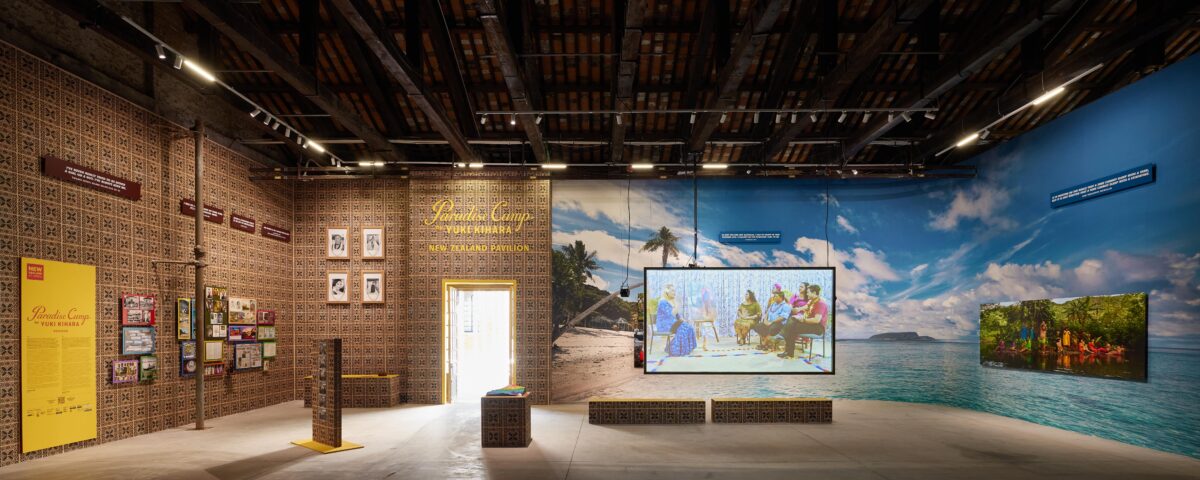
Yuki Kihara, Paradise Camp, curated by Natalie King. Installation view, Biennale Arte 2022. Photo: Luke Walker
One of the first references to the presence of a third gender in French Polynesia in the Western archive can be found in the diary of a marine officer. In 1789, during a stay on the island of Tahiti, George Mortimer recorded an encounter between a sailor and a local girl at a night-time dance. Upon inviting her to return to the ship with him, he was surprised to learn that ‘this supposed damsel, when stripped of her theatrical paraphernalia, [was] a smart dapper lad’.1 For Yuki Kihara (b.1975), the New Zealand representative at the 59th Venice Biennale, another ‘first’ introduction called for a radical shift in tone. She is the first Pasifika artist to represent the country and the first fa’afafine artist in history to be exhibited at the Biennale, and Mortimer’s tale in many ways sets the scene for her landmark presentation.
An indigenous gender identification, the word fa’afafine roughly translates into English as ‘in the manner of a woman’. It describes Samoans who were assigned male at birth but have decided to adopt a feminine social role. They exist, says Kihara, in the Vā – the ‘space between men and women’.2 Referencing the complexity of this idea, the New Zealand pavilion is divided into two areas FIG. 1. On one side is an archive, an exhibition within an exhibition, comprising printed material mounted on a Siapo-inspired print FIG. 2.3 The second section is a collaborative undertaking: twelve photographs and a video installation address the historical and cultural legacy of Paul Gauguin, who lived in Tahiti from 1891 to 1893 and again from 1895 to 1901, depicting its landscape and inhabitants, reproducing his painted ‘paradise’ in all of its deceit.
At the entrance to the pavilion is a 3D model of the underwater Vailulu’u volcano, Samoa, which Kihara has rendered in the garish colours of the rainbow flag FIG. 3. Although integrated into the global queer community, the fa’afafine are distinctive for their ties to the land and kinship system. When it was discovered it 1975, Vailulu’u was originally referred to as Fa’afafine Seamount, a name selected by the geologist Stanley Robert Hart because, as he explained: ‘the size of the volcano was a surprise and wasn’t at all what it appeared to be’.4 To him the fa’afafine volcano was a geological deceit, a ‘wolf in sheep’s clothing’.5 As such, simmering beneath Kihara’s volcano lies a message: Samoa is not an all-inclusive rainbow outpost or a gender utopia, it can also be a hostile terrain. The placement of the work at the beginning of the exhibition can be read as an acerbic gesture, in which the artist acknowledges that the colonial dynamic of discovery is what initially defines the nature of her audience’s reception.
On the wall behind the volcano is a collection of archival material: ethnographic photography, colonial portraits, reproductions of Gauguin’s orientalist paintings and pages from books and journals written by missionaries who travelled to the region in the eighteenth and nineteenth centuries. We learn of their incriminations: after Europeans arrived in the Pacific, they glossed fa’afafine gender variance as an excessive symptom of the alleged Polynesian ‘primitive’ and ‘savage sexuality’.6 Subsequently they were erased from the archive of colonial knowledge and swept from public view. Set among Kihara’s offerings are ephemera of contemporary Pacific life: tourist clickbait, misgendered passports, polarising news clippings and data evidence of rising sea levels. In the centre of the display are a number of image comparisons in which Kihara investigates the androgyny of Gauguin’s ‘maidens’ to ask the question: what if they were, in reality, fa’afafine? FIG. 4. In this composite work, tiki pop culture rubs shoulders with ethnography, administration grates against speculation and headline news clamours alongside the steady written voice of the missionary.
As with any archive, the collection of information requires a methodology. It is this potential manipulation that Kihara is drawn to. To make sense of his imperial scope, the colonial archivist opted for the analogue: he read left to right, top to bottom and listed from beginning to end. Kihara’s archive does not subscribe to these criteria: her source material is unlabelled and presented without hierarchy. She refuses the viewer a straightforward, chronological relationship with her selected information; it is at once pan-historical, private and public, factual and fictive. Between these polarities the artist’s presence takes shape – a complex stitching of the self. The title of the work, Vārchive, implicates the artist’s philosophy and existence ‘in between’ the material construction of the work. In this context, Albert Wendt’s definition of the term Vā is instructive:
The betweenness, not empty space, not space that separates but space that relates, that holds separate entities and things together in the Unity-that-is-All, the space that is context, giving meaning to things.
Read the article in full here on Burlington Contemporary’s website.

